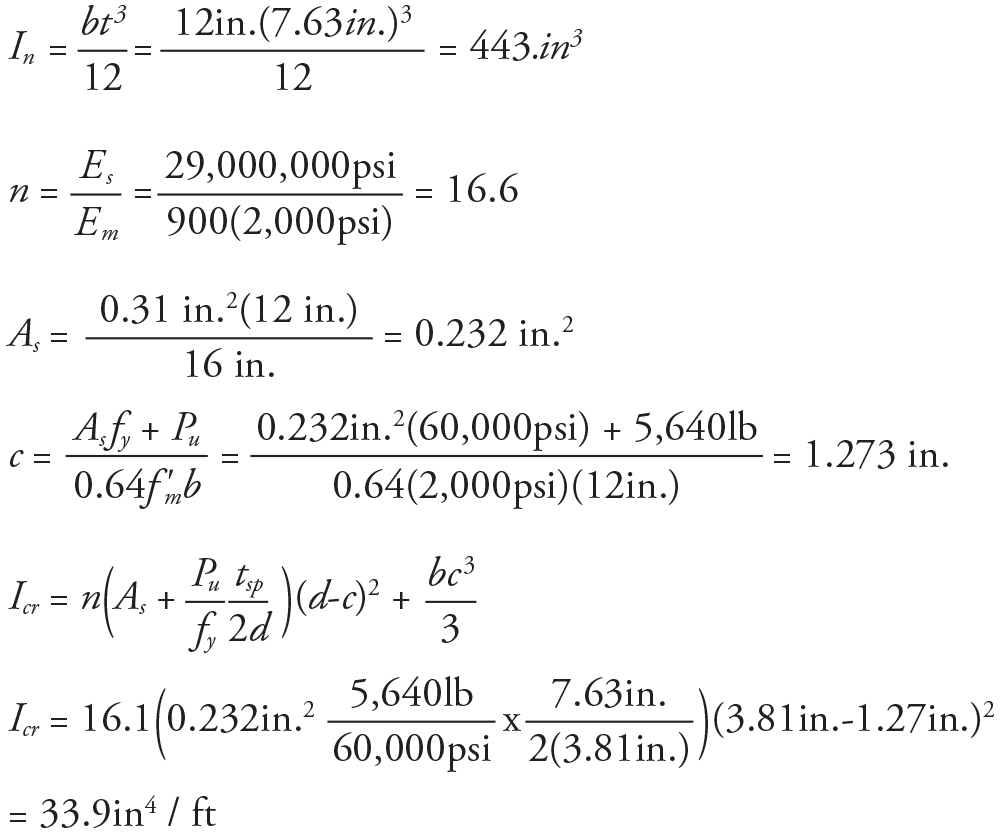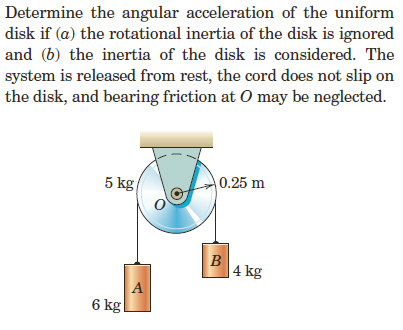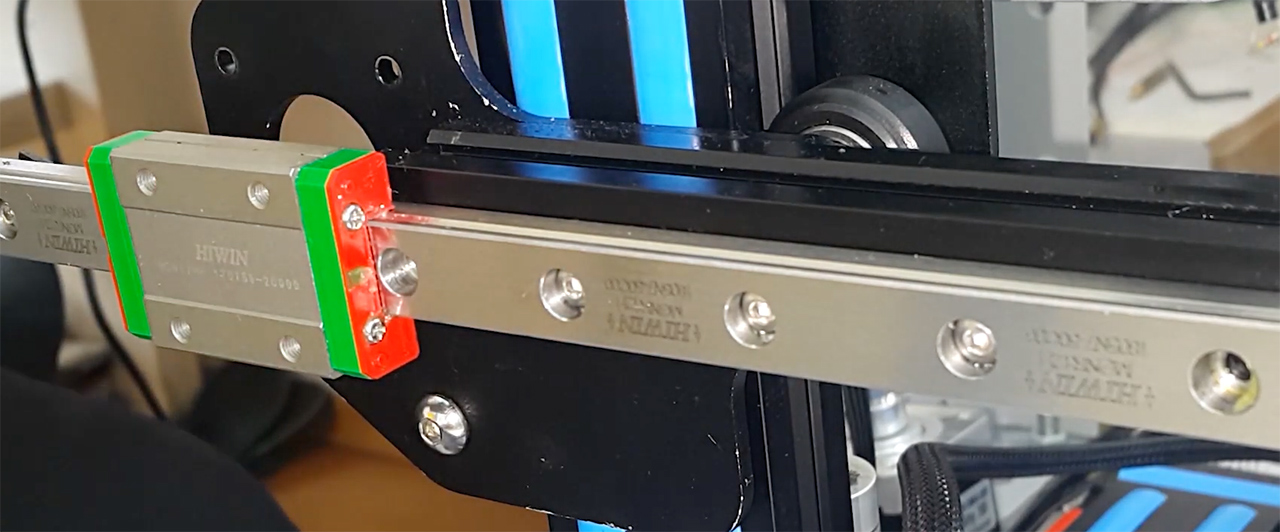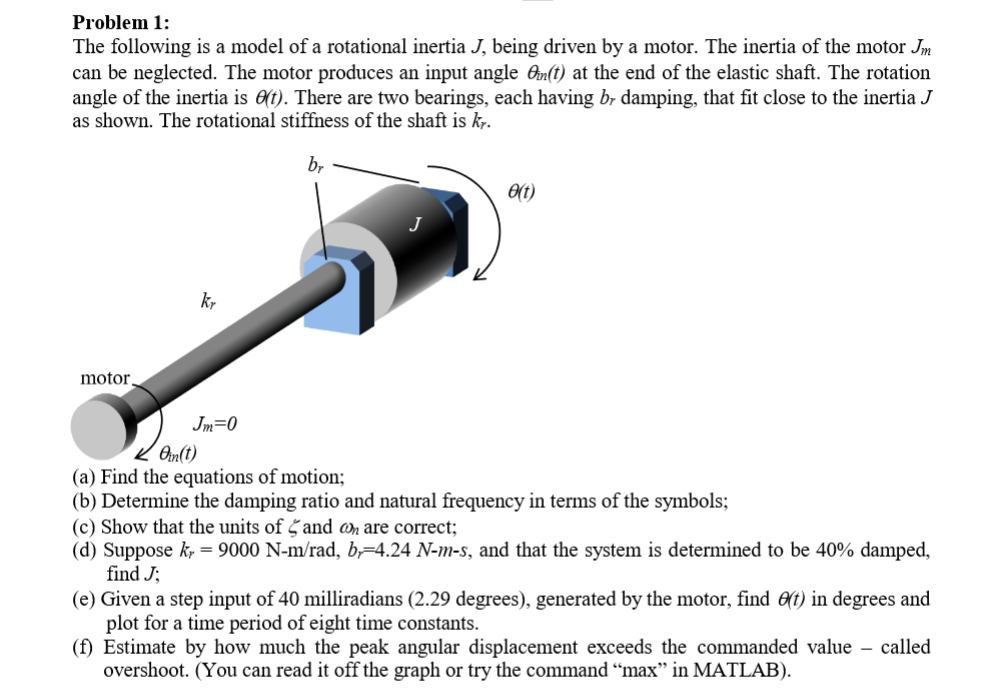- Rotational Inertia Calculator
- Rotational Inertia Of Bearing Beam
- Rotational Inertia Of Bearing Diameter
- Rotational Inertia Of Bearing Pulley
- Moment Of Inertia Of Bearing
Pumps and Systems, June 2009
In the October 2007 issue of P&S, we looked at how several units of measure differ in a linear versus a rotational environment. For example, that simple linear unit called force (f) becomes far more complex in a rotating system. Its rotational counterpart, torque, not only consists of force but also the radius and angle at which that force is applied. This increased complexity also applies to another important unit-inertia. Why is inertia important? There are times when we need to calculate the amount of torque that will be required to start or stop a rotating machine.
The moment of inertia, otherwise known as the mass moment of inertia, angular mass or rotational inertia, of a rigid body is a quantity that determines the torque needed for a desired angular acceleration about a rotational axis, akin to how mass determines the force needed for a desired acceleration. Whirling is defined as the rotation of the plane made by the bent shaft and the line of centers of the bearings. The phenomenon results from such various causes as mass unbalance, hysteresis damping in the shaft, gyroscopic forces, and fluid friction in bearings. Figure 2.36a shows a shaft with a wheel of mass m.
In a linear frame of reference, inertia is relatively simple. As defined by Newton's first law of motion, inertia is the tendency of a body in motion to remain in motion in a straight line and at a constant velocity unless acted on by some outside force. This same law holds true for an object at rest. Since linear motion occurs in a straight line, velocity is simply distance/time (d/t) and is often measured in terms of miles per hour or feet per second. The inertia of an object moving in a straight line is also proportional to its momentum (mv), so a change in either its mass (weight) or velocity results in a similar change in its inertia.
The reason this relationship holds true is because every part of that object moves at the same velocity. For example, if the front bumper of a truck is moving at 50 mph, so are its back bumper and every portion in between. Because of this uniform velocity, it makes no difference how the truck's weight is distributed. It could be concentrated in any location, and its inertia will still be proportional to mv.
Rotational Inertia Calculator
Things are quite different in rotational motion. In fact, none of the above statements apply. For example, consider the simple disc in Figure 1. During rotation, a point on its rim moves at a greater velocity than other points closer to its center, and at its exact center, there is no motion at all. For this reason we normally do not measure rotational velocity in linear units, like feet per second, unless we specify some exact radius. A more useful term is one that describes the number of complete rotations during a unit of time-rotations per minute (RPM), for example. Although an infinite number of points are along its radius and each of them move at different velocities, they all complete a single rotation at the same time. If, however, we want to calculate rotational momentum, it is important that we know the actual velocities of those points.
[[{'type':'media','view_mode':'media_original','fid':'1066','attributes':{'alt':'Figure 1','class':'media-image','id':'2','typeof':'foaf:Image'}}]]
Figure 1
The angular velocity of any point on a rotating disc is ω = Δθ/Δt (where Δθ is the change in the angle and Δt is the change in time). If we consider Δθ to be one complete rotation (360 deg), the distance that a point on that disc will travel is its circumference, or 2πr (where r is the radius from the center of rotation to that point). If we let Δt equal one minute, we can then use the equation v = 2πrw (where v is the equivalent linear velocity and w is rpm) to compute the velocity of any point on the radius and express it in linear units like feet per minute. As expected, rotational velocity is more complicated than the simple v = d/t definition of linear velocity.
It is even more complex with respect to mass. If there are an infinite number of points on the radius of a disc, then there must be an infinite number of circular masses. Unlike our truck example, their location is important as they will have a substantial influence on the inertia of a stationary or rotating disc. The inertia of a rotating disc is proportional to its momentum, but it is not as simple as our linear example (mv). Instead, the momentum of each bit of circular mass is equal to mvr, where r is a particular bit's distance from its axis of rotation. If this is the case, then the disc's total momentum is equal to the sum of all its individual momentums.
Calculating the total momentum or inertia of an infinite number of circular masses that travel at different velocities could be a formidable mathematical task. Fortunately physics, with the help of calculus, has derived a number of simple equations that allow calculation of the rotational inertia of various geometric shapes. In the case of a complex shape, it can often be broken down into several simple shapes that can employ these same equations. Figure 2 shows three different cylinders with a rotational axis illustrated by the straight black line.
Casino night maine.
[[{'type':'media','view_mode':'media_original','fid':'1067','attributes':{'alt':'Figure 2','class':'media-image','id':'2','typeof':'foaf:Image'}}]]
Figure 2
The one on the left is completely solid while the one on the right has a hollow center. The one in the middle takes the form of an extremely thin shell. The equations show the moment of inertia (I) for each configuration. Note that I depends on the mass and radius of the cylinder and where that mass is concentrated. It has nothing to do with its length. (Length, however, would become a component and replace R if the cylinder was rotating about a perpendicular axis through its center.)
If the radius and mass were the same for all three, the shell-like cylinder would possess the most inertia and the solid cylinder would have just half that amount. The one with the hollow center would fall somewhere in between based upon the values of R1 and R2 (R1 is the distance between the axis and the inner radius of the cylinder, while R2 is the distance between the axis and the outer radius). If you would like to see how these equations (and others) are derived, visit http://hypertextbook.com/physics/mechanics/rotational-inertia.

Figure 3 is an example of a cast iron flywheel made from a single casting. The green section is 2 in thick and has a radius of 24 in. The yellow section is 5 in thick and extends 6 in beyond the perimeter of the green section. How can we determine the moment of inertia for this more complex shape?
[[{'type':'media','view_mode':'media_original','fid':'1068','attributes':{'alt':'Figure 3','class':'media-image','id':'2','typeof':'foaf:Image'}}]]
Figure 3
It turns out that our flywheel is a combination of two of the shapes we just discussed-a solid cylinder (green) and a hollow cylinder (yellow). If we determine the weight (mass) of each, we can use those two simple equations to determine the inertia of each. The sum of these two inertias is the total inertia of the flywheel.
You may have noticed that I defined RPM as rotations per minute not revolutions per minute. I have received several emails questioning this in the past, so I will answer it here. Although rotation and revolution are often used interchangeably, they are quite different. When an object revolves it moves about another object. For example, the earth revolves about the sun. When an object rotates it moves about itself, so the earth rotates about its axis once every 24 hours. Therefore, when we use the term RPM to describe the speed of an electric motor or centrifugal pump, R stands for rotations.
Let's talk rotating weight. Rotating weight is a big issue for wheel builders. Why? We make choices that determine wheel weight, its total and location. Builders must understand this topic.
Rotating weight directly affects inertia, so the topic is really inertia. Inertia is the resistance of a mass to acceleration. Moment of inertia (MOI) characterizes this resistance and depends on rotating and non-rotating mass. Builders should be measuring wheel MOI.
I'll show you how to measure moment of inertia (MOI), plus I'll share a spreadsheet to shortcut the math supporting MOI measurement and its effect on riding. Plug in numbers and get usable wattage estimates.
Forces
Aerodynamic drag, mechanical friction, and inertial energy are the forces we face in cycling.


Aerodynamic drag is the most significant.
Mechanical friction was, historically, a bigger obstacle. Numerous inventions were needed to launch the cycling age.
MOI is less discussed, often passed over as insignificant. Yet all who pedal are aware of the effect of weight, especially wheel weight.
Wheel MOI has two parts:
1/ Rotational energy – required to make a wheel rotate. Rotating takes energy.
2/ Translational energy – needed to accelerate a mass. Mass takes energy to get moving.
Benefits of reduced MOI
1/ Sprinting
Lower rotating weight means quicker acceleration and sprinters value it most.
2/ Climbing
Faster climbing is possible with lower weight. Gravity prioritizes weight so its feel is magnified.
Speed varies more on climbs and variations are a larger percentage. Momentum is smaller. A lapse in pedal force makes a larger speed change. Consequently, experts advise that maintaining tempo is an important advantage.
Climbers universally prefer lighter bikes and wheels.

3/ Pedal acceleration
Pedaling is pulse inputs. Micro analyzed, bicycle speed is a sine wave driven by a bumpy, two piston engine. Even smooth pedaling delivers more power on the down stroke. Resulting speed variations include many moments of acceleration. If wheels are lighter, these recoveries are less costly.
While lighter bikes and wheels increase the number and magnitude of speed variations, the competitor senses an advantage. If another climber increases tempo, it is urgent to match the pace, a pure and simple sprinting challenge. Frequent tempo changes in competition biases riders to lighter equipment.
When Campagnolo introduced their extra light Fluid Dynamic disk in 1987, they asserted a lighter wheel is faster because pedal strokes involve small accelerations affected by wheel weight. Download their discussion.
4/ Handling
Low MOI means less force to change angle or direction. Lighter bicycles feel more agile. For touring, fast handling can be distracting, but even sedate tours include moments of lively pedaling. In racing, low MOI is an asset.
Ultimately, so much is subjective. Some worship lightness, others ignore it. It's often discounted because lightness is associated with weakness, unreliability, and higher maintenance. Yet no riders disagree, lighter weight is generally beneficial. While there are selective benefits to higher weight (stability, for one), they are usually outweighed by the sensation of speed, efficiency, and freedom.
An excellent, approachable discussion of wheel inertia is found at the French website Roues Artisanales. Check the inertia section of Adrien's 'Grand Test,' where he offers MOI for nearly 80 wheel sets.
Measuring MOI
Who measures MOI? For wheels, the relevant numbers include all components including tire. Wheel builders are often the only people in a position to measure and catalog MOI. Too few builders are checking MOI and using data to guide their choices and advise riders.
Consequently, some place too much emphasis on the advantages of low weight. Others ignore the issue in favor of aerodynamics or bearings. The full picture includes MOI.
Regardless of its relative importance, wheel engineers closely monitor MOI. As Lennard Zinn reported in 2006.
'Perhaps some of you remember when I did a test in VeloNews seven years ago (in the 6/28/99 issue) of wheel inertia by building a rotational pendulum in my garage. I was just at a Mavic tech seminar in Annecy, France, last week and saw a test machine set up virtually the same in the Mavic test lab.'
Thankfully, this is simple physics and anyone can build an accurate MOI machine. Here is a trifilar pendulum, the type of machine you should make and use.
My platform is three, ½' x 3' dowels, assembled in a triangle. Each corner is connected overhead with 30lb monofilament fishing line. The exact dimensions don't matter but must be accurately recorded and entered into formulas used to determine MOI.These are the mechanics:
Inertia = T^2( (W/r)*a*b)/(4*π^2*h)*1000

Figure 3 is an example of a cast iron flywheel made from a single casting. The green section is 2 in thick and has a radius of 24 in. The yellow section is 5 in thick and extends 6 in beyond the perimeter of the green section. How can we determine the moment of inertia for this more complex shape?
[[{'type':'media','view_mode':'media_original','fid':'1068','attributes':{'alt':'Figure 3','class':'media-image','id':'2','typeof':'foaf:Image'}}]]
Figure 3
It turns out that our flywheel is a combination of two of the shapes we just discussed-a solid cylinder (green) and a hollow cylinder (yellow). If we determine the weight (mass) of each, we can use those two simple equations to determine the inertia of each. The sum of these two inertias is the total inertia of the flywheel.
You may have noticed that I defined RPM as rotations per minute not revolutions per minute. I have received several emails questioning this in the past, so I will answer it here. Although rotation and revolution are often used interchangeably, they are quite different. When an object revolves it moves about another object. For example, the earth revolves about the sun. When an object rotates it moves about itself, so the earth rotates about its axis once every 24 hours. Therefore, when we use the term RPM to describe the speed of an electric motor or centrifugal pump, R stands for rotations.
Let's talk rotating weight. Rotating weight is a big issue for wheel builders. Why? We make choices that determine wheel weight, its total and location. Builders must understand this topic.
Rotating weight directly affects inertia, so the topic is really inertia. Inertia is the resistance of a mass to acceleration. Moment of inertia (MOI) characterizes this resistance and depends on rotating and non-rotating mass. Builders should be measuring wheel MOI.
I'll show you how to measure moment of inertia (MOI), plus I'll share a spreadsheet to shortcut the math supporting MOI measurement and its effect on riding. Plug in numbers and get usable wattage estimates.
Forces
Aerodynamic drag, mechanical friction, and inertial energy are the forces we face in cycling.
Aerodynamic drag is the most significant.
Mechanical friction was, historically, a bigger obstacle. Numerous inventions were needed to launch the cycling age.
MOI is less discussed, often passed over as insignificant. Yet all who pedal are aware of the effect of weight, especially wheel weight.
Wheel MOI has two parts:
1/ Rotational energy – required to make a wheel rotate. Rotating takes energy.
2/ Translational energy – needed to accelerate a mass. Mass takes energy to get moving.
Benefits of reduced MOI
1/ Sprinting
Lower rotating weight means quicker acceleration and sprinters value it most.
2/ Climbing
Faster climbing is possible with lower weight. Gravity prioritizes weight so its feel is magnified.
Speed varies more on climbs and variations are a larger percentage. Momentum is smaller. A lapse in pedal force makes a larger speed change. Consequently, experts advise that maintaining tempo is an important advantage.
Climbers universally prefer lighter bikes and wheels.
3/ Pedal acceleration
Pedaling is pulse inputs. Micro analyzed, bicycle speed is a sine wave driven by a bumpy, two piston engine. Even smooth pedaling delivers more power on the down stroke. Resulting speed variations include many moments of acceleration. If wheels are lighter, these recoveries are less costly.
While lighter bikes and wheels increase the number and magnitude of speed variations, the competitor senses an advantage. If another climber increases tempo, it is urgent to match the pace, a pure and simple sprinting challenge. Frequent tempo changes in competition biases riders to lighter equipment.
When Campagnolo introduced their extra light Fluid Dynamic disk in 1987, they asserted a lighter wheel is faster because pedal strokes involve small accelerations affected by wheel weight. Download their discussion.
4/ Handling
Low MOI means less force to change angle or direction. Lighter bicycles feel more agile. For touring, fast handling can be distracting, but even sedate tours include moments of lively pedaling. In racing, low MOI is an asset.
Ultimately, so much is subjective. Some worship lightness, others ignore it. It's often discounted because lightness is associated with weakness, unreliability, and higher maintenance. Yet no riders disagree, lighter weight is generally beneficial. While there are selective benefits to higher weight (stability, for one), they are usually outweighed by the sensation of speed, efficiency, and freedom.
An excellent, approachable discussion of wheel inertia is found at the French website Roues Artisanales. Check the inertia section of Adrien's 'Grand Test,' where he offers MOI for nearly 80 wheel sets.
Measuring MOI
Who measures MOI? For wheels, the relevant numbers include all components including tire. Wheel builders are often the only people in a position to measure and catalog MOI. Too few builders are checking MOI and using data to guide their choices and advise riders.
Consequently, some place too much emphasis on the advantages of low weight. Others ignore the issue in favor of aerodynamics or bearings. The full picture includes MOI.
Regardless of its relative importance, wheel engineers closely monitor MOI. As Lennard Zinn reported in 2006.
'Perhaps some of you remember when I did a test in VeloNews seven years ago (in the 6/28/99 issue) of wheel inertia by building a rotational pendulum in my garage. I was just at a Mavic tech seminar in Annecy, France, last week and saw a test machine set up virtually the same in the Mavic test lab.'
Thankfully, this is simple physics and anyone can build an accurate MOI machine. Here is a trifilar pendulum, the type of machine you should make and use.
My platform is three, ½' x 3' dowels, assembled in a triangle. Each corner is connected overhead with 30lb monofilament fishing line. The exact dimensions don't matter but must be accurately recorded and entered into formulas used to determine MOI.These are the mechanics:
Inertia = T^2( (W/r)*a*b)/(4*π^2*h)*1000
Inertia = gm^2
T = Oscillation period
W = weight in g
r = gf/N
a = diameter of top anchor
b = diameter of bottom
h = height
To calculate work (accelerate from zero to 30kph) in joules of energy:
Total energy = Rotational energy + Translational energy
Total energy = 1/2(Iw^2) + 1/2(mv^2)
Total energy = 1/2(Tire Inertia + Wheel Inertia)w^2 + 1/2(wheel mass + tire mass)v^2
Wheel total energy = 40% + 60%
w^2 = rotational speed in rad/s (30km/h = 24.54rad/s)
v^2 = wheel velocity in m/s (30km/h = 8.33m/s)
m = weight in kg
I = inertia in kg/m^2
To spare you the math, here is an auto calculating spreadsheet. The yellow cells need your input. Enter dimensions of your own jig, the period of the pendulum motion, and weight and you get an accurate MOI for your wheel, rim, tire, or anything. Pre-existing numbers are from my machine and two recently tested wheels. The other cells calculate based on your entries. Download the sheet (excel) for long-term use.
Rotational Inertia Of Bearing Beam
Watch this movie to see how easy it is to count pendulum cycles. Here is my own unit, whose dimensions are entered in the embedded spreadsheet. Remember to replace those with your own, once you build it.
The results are indisputable. The costs and benefits of MOI can be predicted but real world variables are numerous. The lesson is to understand MOI and establish it for various wheels. Wheel design needs all useful input and, all else equal, lower MOI is almost always preferable.
Rotational Inertia Of Bearing Diameter
We want to learn how MOI affects wheel feel and performance. With a dynamic structure in a complex context (rider, bike, terrain), data is our best tool. Besides, if two wheel designs have similar weight, strength, cost, and longevity but one has much better MOI, its design is better. This should be perceived, quantified, and recognized. As we aspire to higher performance standards, all measurable dynamics must be considered!
Rotational Inertia Of Bearing Pulley
Have fun building your MOI machine, you won't be disappointed. Do some tests, take notes, share with customers and others like me. The pace of fundamental learning may seem glacial at times but we can all do a part.
Moment Of Inertia Of Bearing
For further insight to the subject, download Jim Martin's seminal 1998 paper on bicycle power. Thanks also to Adrien Gontier of Roues Artisanales and illustrious theoretician, Josh Deetz.
